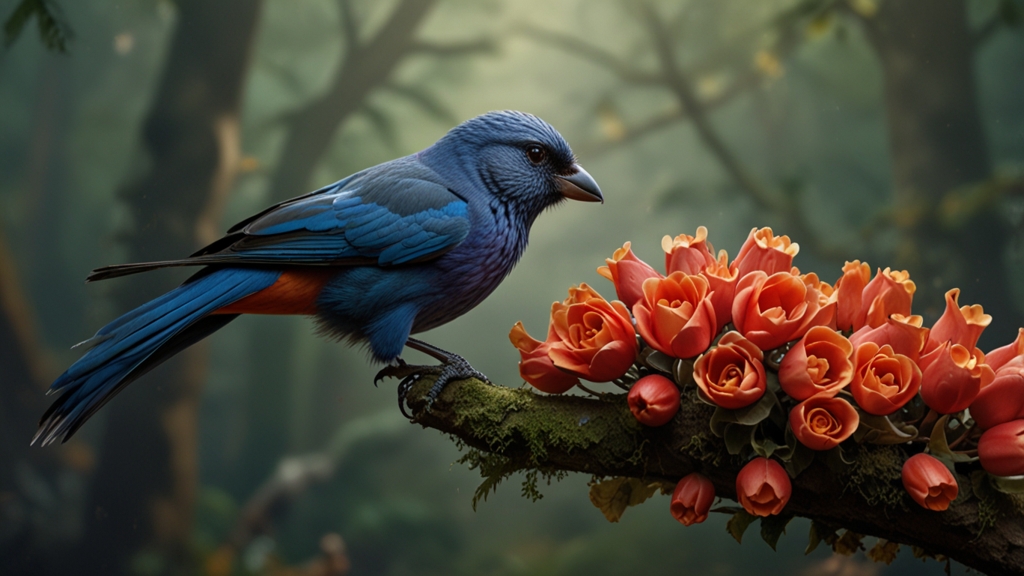The Legends and Myths Surrounding Birds Throughout History
Birds have always held a special place in human culture, mythology, and religion. From ancient civilizations to modern folklore, these winged creatures have been revered, feared, and respected. Their ability to soar high above the earth has often linked them to the divine, making them subjects of numerous legends and myths. This article delves into some of the most fascinating stories about birds from around the world.
Birds as Divine Messengers
In many cultures, birds are seen as messengers from the gods. Ancient Greek mythology features Hermes, the god of travelers and commerce, who was often depicted with wings on his sandals or helmet. Hermes' swiftness and ability to move between the mortal and divine worlds were symbolized by birds. Similarly, in Norse mythology, Odin, the chief of the gods, had two ravens named Huginn (thought) and Muninn (memory) who traveled the world and brought back crucial information.
The Aboriginal Australians of the Dreamtime see birds as spirit beings and messengers. The eagle, for example, is often revered as a guardian and guide. For example, in some Aboriginal mythologies, the wedge-tailed eagle, known as Bunjil, is considered the creator and protector of people.
"Birds are the most accomplished aeronauts the action of whose wings has been so admirably adapted... that before their flight all other movements and awkward circles in the air must cease." - Leonardo da Vinci
The Phoenix: Symbol of Death and Rebirth
One of the most enduring myths about birds is that of the Phoenix. Originating in ancient Egyptian mythology, the Phoenix is a magnificent bird that cyclically regenerates or is otherwise born again. According to legend, the Phoenix would build a nest of myrrh, set it on fire, and be consumed by the flames. From its ashes, a new Phoenix would arise, symbolizing life, death, and rebirth. This myth has been adopted by various cultures, including the Greeks and Romans, who saw it as an allegory for immortality and renewal.
Birds of Luck and Omens
Birds have often been associated with both good and bad omens. In Roman and Greek cultures, augury, the practice of interpreting omens from the observed behavior of birds, was a significant part of decision-making processes. A flying bird from the right was considered a good omen, while one from the left was considered a bad sign.
The superstition surrounding birds and omens is not limited to the ancient world. In more recent folklore, the sight of a single magpie is considered bad luck in the UK, while two magpies are said to bring joy. Meanwhile, in many cultures, owls are often viewed as harbingers of death, perhaps due to their nocturnal nature and eerie calls.
"Once upon a midnight dreary, while I pondered, weak and weary, Over many a quaint and curious volume of forgotten lore— While I nodded, nearly napping, suddenly there came a tapping, As of someone gently rapping, rapping at my chamber door. 'Tis some visitor,' I muttered, 'tapping at my chamber door— Only this and nothing more.'" - Edgar Allan Poe, "The Raven"
Mythical Birds and Their Stories
Different cultures have their mythical birds with unique stories. The Garuda, a bird-like creature from Hindu and Buddhist mythology, is often depicted as a massive, eagle-like figure. According to Hindu texts, Garuda is the king of birds and serves as the mount of Lord Vishnu, a major god in Hinduism.
Another fascinating bird is the Thunderbird, a legendary creature in North American Indigenous cultures. The Thunderbird is said to be a supernatural bird of great power and strength, often associated with storms and lightning. It was believed that the Thunderbird could shoot lightning from its eyes and create thunder by flapping its wings.
In Japanese folklore, the Tengu, part human and part bird, are known as skilled martial artists and protectors of mountains and forests. Though they were originally perceived as disruptive demons, over time, Tengu came to be seen as more protective and even benevolent beings.
Conclusion
Throughout history, birds have fascinated and inspired humans. They have served as symbols of freedom, divine messengers, harbingers of fate, and mythical creatures of great power. The legends and myths surrounding birds reflect our enduring curiosity and reverence for these incredible creatures. Whether seen as benevolent or ominous, birds continue to be an integral part of folklore and mythology, bridging the gap between the earthly and the divine.









